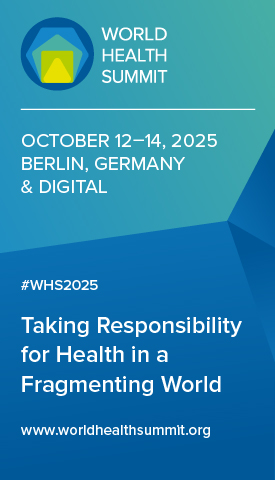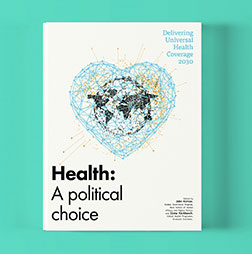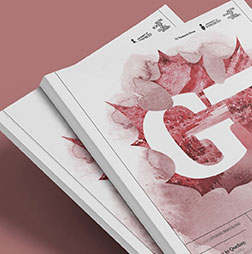It’s time to leap to a new global health architecture
Some of the topics on today’s health agendas may seem familiar, but the tone and tenor of the debate are different from those in years past. That difference reflects a simple but sobering fact: day by day, the foundations of global health are shifting beneath our feet.
Collectively, as stakeholders in global health, we face a moment of reckoning. Our global health architecture has helped us eradicate smallpox, halve childhood mortality and deliver so many other health gains. But the way this architecture has grown over the past decade – unplanned, often in response to crises – has given rise to fragmentation, duplication and, at times, unhealthy competition.
Amidst new geopolitical realities and an unprecedented retrenchment in funding, what had become perennial conversations about how to reform our global health architecture – in ways that allow us to protect and build on the gains secured to date – have taken on an urgent and existential quality. All this comes at a time of unprecedented and growing fragility in countries that are at the sharp end of escalating and intertwined threats to health: conflict, climate change, and the increasing and dynamic threat posed by infectious diseases, including pandemic threats.
This is the reality that confronts us all today. That same reality that confronted me in 2024, when I took the helm at Gavi, the Vaccine Alliance. It was clear to me then, as it is clear to all of us now, that for Gavi to succeed in its next five-year period, we needed to embrace bold and transformative change.
Redefining the global health architecture
Gavi, like all global health institutions, faces formidable challenges. In addition to preparing for the next five years and delivering the replenishment required to fund the execution of that five-year strategy, Gavi has also needed to put in place structural and cultural changes if it is to continue to operate impactfully in a rapidly changing world. And that is a world in which funding will be increasingly scarce – for countries, for Gavi and for our partners.
We, as Gavi and as global health stakeholders, need to embrace new opportunities: from the promise of new technologies to deliver efficiency and strengthen vaccine delivery, and the strong and growing commitment to immunisation by national governments in the countries that Gavi supports, to the promise of new vaccines themselves.
Thus the Gavi Leap was born: a comprehensive programme of change that over the past 12 months has transformed the Gavi secretariat according to four core principles. These principles, I humbly believe, not only will guide Gavi to success over the next five years, but can also help to guide the orderly and urgent reform needed to create a more effective, more inclusive and more coherent global health architecture.
First, and most fundamental, the Gavi Leap is founded on the principle of country-centricity. We have distilled the spirit of the Lusaka Agenda into concrete steps to reform every process, from grant windows and management cycles to technical support, monitoring and evaluation. We do this to ensure that we are aligned with the priorities of countries at the same time as reducing the bureaucratic burdens and opportunity costs that we place on them. Everything that Gavi does, and every one of the reforms we have enacted through the Leap, stems from a ‘country-first’ mindset. This in turn gives rise to the further three Leap principles of supporting national self-reliance, focused mandates and finite lifespans.
A country-centric approach
The implications of these principles for a reformed global health architecture are clear. Institutions can only be truly country-centric if they are designed to empower and enable all countries to assume full responsibility for health programmes, including immunisation, within a strong and resilient national health system.
Achieving this requires a fundamental shift in mindset and in practice. Our point of reference as global health institutions should be centred in the communities we serve. A young mother from a remote community in a low-income country who comes to the primary healthcare facility could have her needs and priorities met through the combined and coordinated efforts of the various international organisations with a presence in her country, with services integrated at the point of delivery. This would be good for her, good for national resilience and good for international organisations, which would be freed up to concentrate on what they do best: generating global public good and maximising the beneficial impact of the substantial investments we make collectively each year.
Success in this endeavour will depend on the political will of national governments, and also on building consensus among international organisations. We must come together as stakeholders and forge a pathway for more effective collaboration in countries, to minimise duplication and fragmentation and to make a ‘merger at the last mile’ for delivery.
In practice, a merger at the last mile means ensuring that collaboration and partnership among organisations moves from the ad hoc model that has thus far been the norm to a more formal, predictable, mandated and scalable model of operational integration in countries.












